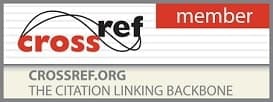- Printed Journal
- Indexed Journal
- Refereed Journal
- Peer Reviewed Journal
P-ISSN: 2394-1685 | E-ISSN: 2394-1693 | CODEN: IJPEJB
Impact Factor (RJIF): 5.38
2016, Vol. 3, Issue 1, Part E
A comparative study on the effects of autogenic mechanism and reciprocal mechanism on hamstring flexibility among AMU students
Author(s): Sabitha Eunice Regima, Rajan Balakrishnan, Tebalatshmi a/p Sinnasamy
Abstract:
Title: A comparative study on therneffects of autogenic mechanism and reciprocal mechanism on hamstringrnflexibility among AMU students.
Background: There are less studies wasrndone to investigate the effect on hamstring flexibility by using autogenicrnmechanism and reciprocal mechanism and all these studies have used combinationrnof few mechanisms to identify the effect on muscle activity and range of motionrnwhich results in poor understanding on which mechanism causes improvement.rnThere is also less awareness in clinical setting on mechanisms and stretchingrntechniques: agonist contract relax stretch and contract relax since bothrnmechanism and techniques can be used to improve muscle flexibility.
Objective: To compare therneffectiveness of autogenic mechanism and reciprocal mechanism on Hamstringrnflexibility.
Methods: This study was conducted onrn30 AMU students with hamstring tightness. Those 30 individuals were dividedrnequally into 2 groups and contract relax and agonist contract relax was givenrnrespectively. Phase 1 and phase 2 were included in both techniques where anglernof extension lag was recorded after each phase. Before each intervention, warmrnup period was given for 10 minutes in order to prevent muscle cramps andrnstretching techniques was excluded.
Results: There was a significantrndifference between contract relax and agonist contract relax techniques onrnphase 1(p < 0.05 = 0.018) and phase 2(p < 0.05 = 0.02).rnComparison of mean between both techniques shows that agonist contract relaxrntechniques shows more improvement than contract relax in phase 1(ACR=36.53,rnCR=45.90) and phase 2(ACR=28.90, CR=41.27).Thereby the alternative hypothesisrnis accepted which shows that there is significant difference between thernmechanisms.
Conclusion: This has concluded that bothrnmechanisms can be used in improving the hamstring flexibility but reciprocalrnmechanism (agonist contract relax) show greater gains in hamstring flexibility.rnIn addition, application of both mechanisms for 20 seconds is more beneficialrnthan 10 seconds due to duration of the contractions.
Pages: 281-292 | 2207 Views 332 Downloads
Download Full Article: Click Here

How to cite this article:
Sabitha Eunice Regima, Rajan Balakrishnan, Tebalatshmi a/p Sinnasamy. A comparative study on the effects of autogenic mechanism and reciprocal mechanism on hamstring flexibility among AMU students. Int J Phys Educ Sports Health 2016;3(1):281-292.








 Research Journals
Research Journals